Are legs getting thinner and thinner after diabetes, is it bad health?
[Professional doctor to answer your questions

The reason why people with diabetes have high blood sugar is because their own pancreatic islet cells do not secrete enough insulin, blood sugar is not fully utilized and a large amount of excess caused. What many people do not know is that insulin has a major physiological function is to convert the remaining blood sugar into fat storage, and will first be stored in the abdominal organs such as the stomach and intestines, and then to the limbs of the subcutaneous storage.
When diabetic people blood sugar is not effectively controlled, the body is not enough insulin does not have the "energy" to convert blood sugar into fat, the body will be more and more thin and is the overall thin; when the blood sugar can get a certain degree of control, insulin can take out part of the "energy When blood sugar can be controlled to a certain extent, insulin can take out some of its "energy" to convert blood sugar into fat, which is mostly stored in the abdomen and less in the limbs, thus manifesting itself as a body shape with a big stomach and thin arms and legs. This situation is more common in people who inject insulin to control blood sugar.

The reason for this is that the body protein intake is insufficient, because people with diabetes need to control their diet, many people take a variety of measures in eating and drinking, meat, milk and eggs and other high-protein food intake is often not enough, for example, every day can not guarantee that there is half a catty of milk, an egg, two two lean meat, two two soybean products, etc., will lead to insufficient protein intake, and the amount of protein and the limb muscles of the strength of the muscle is closely related to the atrophy. If coupled with their own blood sugar is not effectively utilized, the body has to move the protein breakdown for energy, and accelerated the loss of protein in the limbs, there is a result of the legs are getting thinner and thinner.

To summarize, when people with diabetes develop a body type with a large stomach and thin limbs, they still need to make some adjustments in their treatment. For example, people who inject insulin should calculate the injection volume more precisely to avoid large doses; people who use insulin agonist type of hypoglycemic drugs should reduce the volume in moderation; people whose diet lacks high-protein food should eat more meat, milk and eggs in moderation; and muscle resistance exercises should be added to strengthen the muscles and so on when exercising.
I hope this answer can help you, welcome to click on the attention and leave a message, together to learn and exchange more health knowledge.
The cause of diabetic leg thin to diabetes is the most classic is "three more and one less" to say. "Three more and one less" is the early metabolic disorders in the clinical manifestations of diabetes, of course, will continue for the rest of the diabetic's life.

In fact, to put it bluntly - polyuria, polydipsia, polyphagia and weight loss. Why does all this happen?
Because of elevated blood glucose due to osmotic diuresis caused by polyuria, followed by thirst, so they will drink a lot of water, water to drink more urine will naturally be more, which is "more drinking, more urination".

"Eat more and lose weight" - with impaired glucose utilization by peripheral tissues, lipolysis increases, so there is less fat on the arms and legs, and the arms and legs naturally lose weight, along with a negative balance of protein metabolism, which is progressively seen as lethargy and wasting. You may also have a doubt? Why diabetics thin arms, thin legs, how there will still have a big belly, this is to start from the fat metabolism, fat are fat from the stomach out of the thin last thin stomach. And after the consumption of fat in the limbs, we will eat a lot of things because of hypoglycemia, muscle hunger, if the control is not too much to eat, on the one hand, blood sugar will soar, on the other hand, the remaining metabolism does not fall out of the energy will also be in the form of fat stored in the form of our abdominal area around the belly, so the stomach will be getting bigger and bigger.
Does the fact that diabetic legs are getting thinner indicate that the body is failing?
First of all, for diabetics legs are getting thinner and thinner, if the corresponding stomach is getting fatter and fatter is certainly not good, because the legs are too thin and the stomach is too big, which may lead to the knee joints can not withstand the weight, joint problems. Secondly, it is a substantial problem, getting thinner and thinner can only show that the blood sugar control is not proper, or that the fluctuation of blood sugar has a problem. For adults with diabetes, blood sugar should be stabilized and controlled, if it is a normal weight should be maintained, if overweight should be controlled from a combination of dietary control, blood sugar control, reasonable exercise and other aspects of control, slow weight loss, in order to facilitate better control of blood sugar?

So that for the body wasting great also have to look for reasons from the blood sugar, diet control. Diabetes itself is a metabolic abnormality of the disease, the body wasting situation is justifiable, but as long as attention to the disease of the various aspects of active control, can also be relatively good physical condition, at least can slow down the development of the disease.
Is there any chance of gaining back the diabetic weight?
Many diabetics eat too much for fear of high blood sugar because of their basic metabolism, and dare to eat only very little in order to keep their blood sugar from fluctuating. This slowly leads to malnutrition, or wasting away due to insufficient energy intake in the body. Intentionally want to control blood sugar, a large part of the people because of excessive control finally lead to hypoglycemia.
The key to the key reason lies in the improper control of the diet, hypoglycemic drugs, insulin and other controls as long as you follow the guidance of a professional doctor is generally not a problem, so today we will talk about how to match the diet of diabetics.
Step 1: Develop a total calorie count
You need to first calculate your ideal body weight (KG) = height (CM) - 105, after which the correspondence is found: adults need 105 to 125.5KJ of energy per kilogram of ideal body weight per day in the resting state, but if engaged in light physical activity is 125.5 to 146KJ, moderate 146 to 167KJ, moderate 167KJ or more.
Step 2: Percentage distribution of major food energy sources
Carbohydrates 50% to 60%.
Protein 15%
30% fat
Step 3: Calorie Distribution
Four meals a day are recommended, which is also consistent with eating fewer meals. The distribution of calories in the four meals is 1:2:2:2

Finally, there is a small detail, in order to ensure that the calories are enough at the same time should also take into account a balanced diet, and secondly to ensure that you can eat enough, there is calorie control is not it difficult to eat enough?
Not really, as long as we all eat more food rich in dietary fiber, and can make me feel very full with the occupation of the stomach, and dietary fiber itself is not much calories. It also doesn't affect our blood sugar fluctuations.
If you want to eat more, it's not hard to realize from the above account that we can consume more calories if we increase our energy expenditure.
And what if the subject is worried about diabetic legs getting thinner and looking unhealthy? Want to eat a pair of fat legs think it is difficult, and you do not want to this dry, the best is to be able to increase the latitude of the leg muscles through reasonable exercise, so that we have to legs look thicker, but also healthier, can better for our relief.


Again, if one is able to exercise actively there is a chance to improve the whole body, including the potbelly, and in the case of type 2 diabetes, if one is disciplined enough, one can even expect to return to normal with dietary control and sensible exercise.
Thank you for reading, I hope my answer can be of some help to you, if you think it's not bad, please give me a like to show encouragement, if you can also give me a concern, I think it must be the biggest support for me, thank you!
Picture source from the internet if any infringement please contact to delete, thank you!
Are legs getting thinner and thinner after diabetes, is it bad health? Not necessarily, it needs to be related to the following conditions.
1. legs are getting thinner and thinner, indicating the gradual development of abdominal obesity most of the adipose tissue will accumulate in the abdomen, which is also a particularly typical clinical symptom of diabetes in the late stage, that is, abdominal obesity, most of this to the usual amount of exercise to reduce. These are with long-term blood sugar control is not good, lipid metabolism abnormalities, adipocyte secretion disorders, vascular endothelial cell dysfunction, will induce this abdominal obesity, centripetal obesity fat accumulation in the abdomen, the performance of the calf is thin.
2. Unsatisfactory blood glucose control, in this case, there will be a large amount of adipose tissue consumption, in the long-term high blood glucose induced by insulin cell deficiency. Adipose tissue will be consumed in large quantities, followed by fatigue, emaciation, malnutrition of the limbs, the most serious will appear in the lower limbs of the lower leg thinning, lack of adipose tissue, which is generally due to the poor glycemic control of the metabolic syndrome of hyperglycemia after the emergence of fat metabolism catabolic disorders have a relationship.
3. In addition to leg thinning, you also need to observe whether there is lower limb numbness and cold pain, this can be accompanied by painful allergies or pain, late motor nerve damage to muscle loss and myasthenia gravis, paralysis, severe cases of reflexes disappear, electrophysiological examination of the slowing down of nerve conduction velocity, the main will be a single peripheral nerve damage is relatively small, the main cumulative to the cerebral nerves.
4. Diabetes accumulates to the distal lower limbs, nerve abnormalities, there may be different degrees of peripheral vasculopathy will cause foot ischemia and hypoxia, if coupled with infection, vasospasm, and atrophy of adipose tissue will appear leg deformation, there may also be deformities of the foot, dry and cold skin, the serious will also appear in the lower limbs ulcers, gangrene, these are to the diabetic peripheral neuropathy peripheral circulatory ischemia is related to. The diabetic peripheral neuropathy is associated with peripheral circulatory ischemia.
Legs more and more thin, does not necessarily mean that the body is not good, so that need to be caused from the above reasons for thin legs, start to timely find the cause of the disease treatment of the original disease, regular review of the changes in indicators, and monitor the blood pressure, blood lipids, blood glucose changes, and more water to promote cell metabolism, to improve the ischemic and hypoxic state. The following is a list of the most common causes of ischemia and hypoxia,
The danger of legs getting thinner after diabetes is not bad health, it's bad blood sugar, and the danger is certainly obvious.
Legs are getting thinner and thinner, this is because diabetic patients, if the blood sugar control is not good, the consumption of the body is more obvious, especially the consumption of protein is relatively large, the patient will be manifested as limb thinning is more obvious, especially the double lower limbs obvious, which often suggests that our sugar lover's blood glucose level is relatively high, and control is not good. At this time, we need to strictly test blood glucose, adjust the medication program, and at the same time, diet and nutritional exercise should also make certain adjustments accordingly.
The second reason for thinner legs is that diabetics with a long history of the disease are prone to comorbid peripheral neuropathy, especially in both lower extremities.
When diabetes and peripheral neuropathy of both lower limbs occurs, muscle atrophy of both legs can also occur, accompanied by numbness, pain and abnormal sensation of both lower limbs, which also suggests that the patient's diabetes is more serious.
At this time, our sugar friends need to strictly strengthen the blood sugar control, but also for the peripheral neuropathy has appeared, give the appropriate nutritional nerve drug treatment program, such as follow the doctor's instructions to take the only can be able to lipoic acid capsules.

This is typical of the diabetic body type and is normal.
It doesn't mean bad health, I'm a diabetic myself and as long as I keep my blood sugar under control, I don't have any problems.
In fact, diabetes itself is not scary, but rather the complications of diabetes brought about by not controlling blood sugar properly, such as diabetic foot, cardiovascular and cerebral vascular diseases, and blindness due to retinal detachment.
Therapeutically I personally feel:
The first is to control your diet;
The second is to step up the campaign;
Third, it's the pills or insulin;
The fourth is to monitor your blood sugar frequently;
Fifth, maintain a good mood and mental state.
With good control, there are plenty of people who live into their 80s and 90s with diabetes.
The problem of thin arms and legs can also be changed by exercising the muscles of the upper and lower limbs.


Sugar addicts presenting with a large stomach and thin limbs are most often seen ininsulin injections, and the use of medications that promote insulin secretion.To improve this symptom, it is recommended that we seek the advice of our doctor and consider changing our glucose-lowering medication.
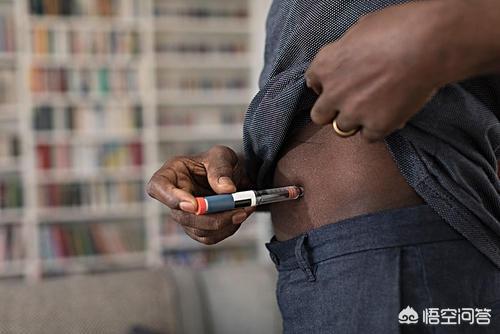
I. Causes of abdominal obesity
Diabetes is a disease that is characterized by increased blood sugar, as the main manifestation. And the only hormone in our body that can lower blood sugar is insulin. Insulin, in addition toIn addition to lowering blood sugar, it also has a role in promoting fat and protein synthesis.
At the same time, different parts of the body have different receptors for insulin, and the abdomen has relatively more insulin receptors. When we inject insulin, or use drugs to promote insulin secretion, insulin will not only help us lower blood sugar, but also promote fat synthesis in the abdomen.
organicMost of the fat is transferred to the abdomen, and the limbs will be prone to wasting, which is the cause of abdominal obesity.
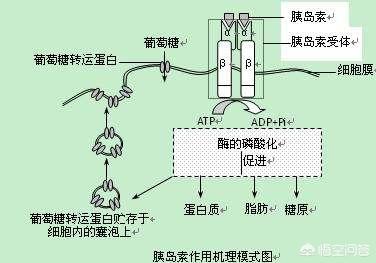
Second, the harm of abdominal obesity
Exacerbate insulin resistance
Abdominal obesity aggravates insulin resistance, which makes insulin less and less effective and is extremely detrimental to glycemic control.
②Fatty Liver
Abdominal obesity, which is not only a problem of "subcutaneous fat", but also a lot of "visceral fat", is very likely to lead to the formation of fatty liver.
III. How to improve
Now that we know why, we need to target our adjustments:
1. Seek medical help
When it comes to changing medication, we sugar lovers must not take matters into our own hands and must seek the advice of our doctors first. Then, the doctor will decide whether to adjust the glucose-lowering program.
2. Exercise
Increasing strength training of abdominal and quad muscles, theEspecially resistance training.Through exercise, not only can you lose your stomach and build up your limb muscles, but you can also reduce insulin resistance and fight against fatty liver.
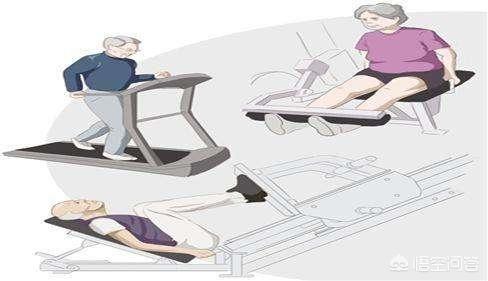
In general, the reason for the emergence of abdominal obesity is mostly related to insulin. We can consider changing glucose-lowering drugs, as well as increasing exercise to achieve the purpose of improving abdominal obesity in sugar patients.
It's not easy to create, so if you find it helpful, please like, retweet, or comment! If you still don't understand, please leave a message in the comment section!
My husband is 170 and originally weighed like 140 pounds and his legs weren't thick to begin with. A few years after being diagnosed with diabetes, his weight dropped to about 120 pounds and now his legs look thinner.
The fact that other people are getting thinner legs is not the result of controlling their blood sugar and exercising more, it is the consequence of not controlling their blood sugar all the time.
My mother-in-law has also been diabetic for many years and has been on insulin and her legs are getting noticeably thinner.
What a worry! Although the percentage of diabetic population is high, without complications appearing it is no different from normal people. But there are still some differences between diabetics and healthy people that can be felt by the loved ones around them.
Diabetic patients will occur more drinking, more food, more urine, weight loss of "three more and one less" typical symptoms, there are many friends found that with diabetes, especially with the development of the disease, in terms of weight loss, the belly meat did not go down, but the legs are getting thinner and thinner, this is actually not uncommon, but also worthy of our vigilance.

Why do diabetics experience weight loss and thinner legs? It is based on 2 main reasons.
First, the reason why diabetics have high blood sugar problems is precisely because the body has problems with the metabolism and utilization of blood sugar, whether it is insulin resistance or insufficient secretion of insulin in the body, will affect the normal utilization of blood sugar by human cells, glucose in the blood is an important substance for the supply of energy to the body, when the glucose is not adequately utilized, and the body needs more energy, then Our body will compensate for the decomposition of proteins, fats and other substances to further provide energy for the body, it is because of this, the blood glucose is not utilized and rise, and the body needs energy and have to be through the decomposition of other substances to supply, therefore, diabetic patients will be the problem of weight loss, this kind of weight loss, of course, including the thinning of the legs.

The second reason for thinner legs is more targeted. With the continuous prolongation of the course of diabetes, if high blood sugar can not get effective and stable control, high blood sugar will gradually affect the health of blood vessels, especially the lower limbs of the capillaries and small blood vessels, will be subjected to the adverse effects of high blood sugar, this effect will lead to small blood vessel lesions, resulting in poor blood transportation, poor blood circulation, the lower limbs do not get adequate nutritional supply, naturally there will be gradual thinning of the Problems.
Understand the above reasons for diabetes caused by lower limb wasting, should also understand, for the problem of lower limb wasting, we should actively pay attention to the lower limb wasting, lower limb wasting in fact, diabetes triggered microangiopathy a specific manifestation, in addition to wasting, because of the lack of blood supply may also appear legs, feet cold, foot pain, lower limb foot sensory abnormalities and other symptoms of discomfort, these symptoms If you do not pay attention to control, will gradually develop, diabetic foot, diabetic peripheral neuropathy and other complications, this is how it happens.
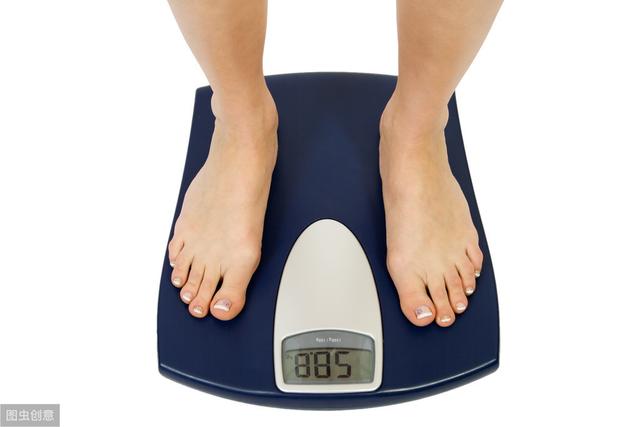
How to deal with the problem of lower limb wasting in diabetes? First of all, of course, it is necessary to strengthen the control of blood glucose, the earlier the active control of high blood glucose, it is easier to control blood glucose, but also better able to reduce the harm of high blood glucose on the body's health, reduce the risk of high blood glucose caused by diabetic complications. Usually the reason why diabetic patients have lower limb wasting is because they don't pay enough attention to high blood sugar and don't actively do a good job of regulating blood sugar, but even so, we should understand that it's not too late to mend the fold, and in the case of initial microvascular complications, try to control blood sugar levels as early as possible, which will not only be able to slow down the process of diabetes-induced lower limb wasting and complications, but also to reduce the risk of diabetic complications, as well. Generally speaking, through active blood glucose regulation, the fasting blood glucose level should be controlled to 7.0 or less, and the postprandial blood glucose level should be controlled to 10.0 or less, in order to be considered as a reasonable level of compliance.
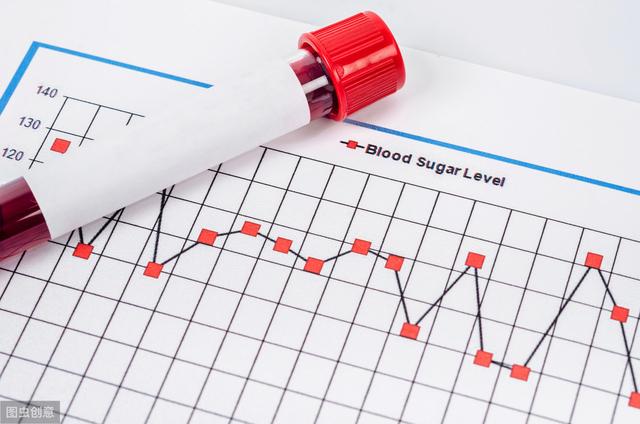
In addition to strengthening blood sugar control, let's talk about diet regulation. Diabetics should pay attention to dietary control, but never excessive dieting, diabetic dietary control, is to control the balance of energy intake, but never control to malnutrition or energy intake is far from enough for the body needs, this practice is not only not conducive to good health, but also prone to the risk of hypoglycemia, but also cause excessive body wasting, the loss outweighs the gain. The correct way of dietary regulation should be, control do not over-nutrition, excessive energy intake, but for the body's daily needs of various nutrients, but also pay attention to balanced supplementation, moderate intake.

The last point emphasized is the most important. For diabetes-induced lower limb wasting, the importance of exercise should also be emphasized. Exercise is one of the 5 carriages to strengthen blood sugar control, which is very important for assisting in the regulation of blood sugar, and for the problem of diabetic wasting of the lower limbs, exercise can not only strengthen blood sugar control, but also the greater benefit lies in the fact that exercise can promote the blood circulation in the lower limbs, stimulate the vitality of the muscle cells in the lower limbs, enhance the use of blood sugar in the muscles of the lower limbs, and improve the insulin resistance of the muscle cells, which are all important benefits to help improve the wasting of lower limbs. All these benefits are important benefits to help improve the lower limb wasting, therefore, if you are a diabetic, lower limb wasting problems, daily life, but also did not pay attention to adhere to the exercise exercise, may wish to let yourself exercise, especially to do some enhance the strength of the lower extremities of the aerobic exercise, to strengthen blood sugar control, to protect the health of the legs and feet, are useful and safe life conditioning.
The first thing the owner should clarify is that a typical symptom of diabetes is thinness! Thin arms and legs are a sign of thinness. Diabetic patients should pay attention to diet, but also pay attention to treatment, the following one by one to explain.
Diabetes mellitus symptoms are manifestations of acute metabolic disorders such as excessive drinking, excessive eating, excessive urination, weight loss, itchy skin, and vision loss. Diabetes Prevention and Control Guidelines Diagnostic Criteria:
① Typical diabetic symptoms (polydipsia, polyuria, polyphagia, weight loss) plus random blood glucose test ≥ 11.1 mmol/L (200 mg/dL)
② Fasting blood glucose test ≥ 7.0 mmol/L (126 mg/dL)
(iii) Blood glucose test ≥11.1 mmol/L (200 mg/dL) 2 h after glucose load. Those without symptoms of diabetes need to repeat the test on another day.

Sugar lovers, how to eat healthier?
1. It is advisable to eat more vegetables, especially those containing <3% carbohydrate. If you want to eat root and tuber foods or soy foods, for every serving of the above foods, reduce the number of servings of rice and flour foods by half accordingly.
It is important to prevent hypoglycemia, which is associated with excessive exercise, inadequate diet, and improper overdose of insulin or hypoglycemic medication, and manifests itself in hunger, fatigue, panic, and hand tremors.
2. No arbitrary dosage
People with diabetes consume food in the prescribed quantities and do not add other foods arbitrarily. Bulky, low-calorie foods may be added.
3. Limit high-fat, high-cholesterol foods
Limit high-fat, high-cholesterol foods such as egg yolks, animal offal, and fatty meats. Eat less fried food, because high temperature can destroy unsaturated fatty acids.
4. Increase food fiber
Join the food fiber if the gum, wheat bran and other soluble dietary fiber, more in beans, fruits, kelp, in the gastrointestinal tract after encountering water in the glucose to form mucilage and slow down the absorption of sugar, so that the postprandial blood glucose and insulin levels are reduced, and has the effect of lowering cholesterol. The daily dietary intake of diabetic patients should be about 30g.
Pharmacological treatment of diabetes
Pathology is characterized by absolute or relative insufficiency of insulin secretion, or insensitivity of peripheral tissues to insulin, causing a systemic disease characterized by disorders of glucose metabolism, including disorders of fat and protein metabolism. Regarding treatment, the most common medication for diabetes is metformin! If metformin alone is used to treat and blood glucose is still not reached, then a combination therapy should be carried out, with the addition of insulinotropic agents, alpha-glucosidase inhibitors, thiazolidinediones, dipeptidyl peptidase inhibitors, sodium-glucose cotransporter protein 2 inhibitors, glucagon-like peptide-1 (receptor agonists or insulin.
I am pharmacist Li, every day and you talk about health, welcome to pay attention! If you still have questions about health, welcome to leave a message to consult, after seeing will be the first time to respond.
Some diabetic patients limbs are getting thinner and thinner is due to long-term poor blood glucose control, hyperglycemic toxicity, in the body to produce inflammatory factor damage, resulting in neuropathy, vasculopathy, not be able to supply enough nutrients to the muscles, so the muscles will be atrophied. This is actually a phenomenon of diabetic neuropathy, called diabetic muscle atrophy, mainly distal limb multiple peripheral sensory nerve abnormalities, clinical manifestations of spasticity and weakness of the lower limbs, atrophy, and in some cases, pain, but there is no sensory impairment.

This question and answer are from the site users, does not represent the position of the site, such as infringement, please contact the administrator to delete.